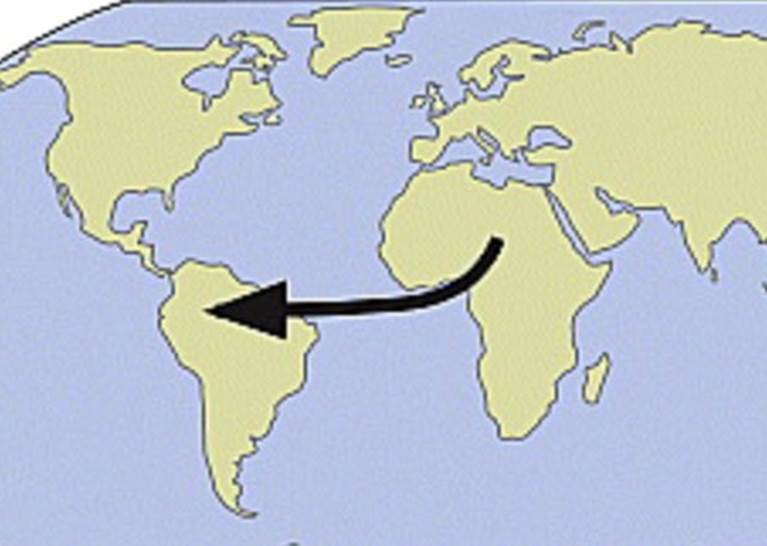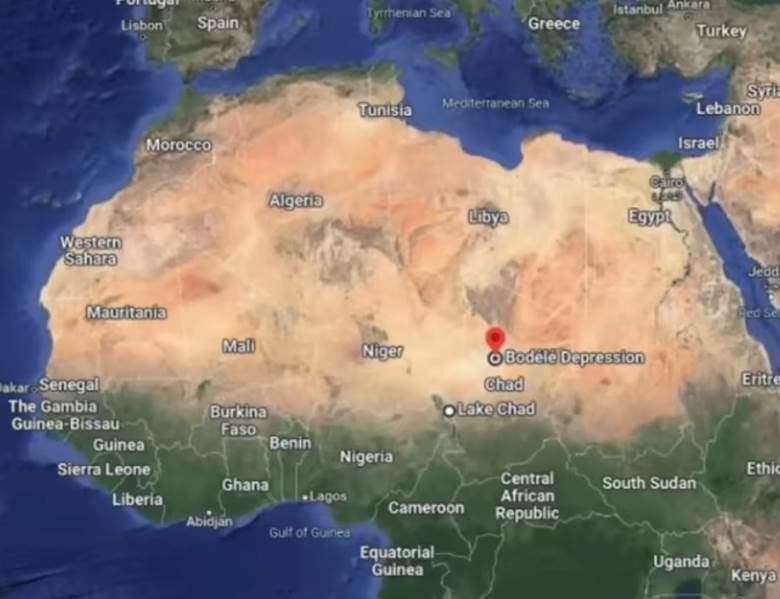
Butterfly Effect: Sahara Desert & Amazon Rain Forest
By Dr Khalid Siddiqui
Ohio

I visited Puerto Rico in 2017 for bird watching. One morning my guide, Hilda Morales-Nieves, was late by almost half an hour. It is very unusual for a guide to be late. She said that she had to stop at a car wash, and faced a long line there.
My next question was why was there so much rush at the car wash? She said, “Last night we had a dust storm and the cars that were not parked in the garages were coated with a thick layer of dust that needed to be power-cleaned.” Puerto Rico is not a desert then where did this sand and dust come from? Her answer surprised me. She said that the dust storm starts in Africa and the wind carries it across the Atlantic Ocean, and drops it in Puerto Rico – a distance of 5,500 miles!! Some of it goes all the way to the Amazon Rainforest in South America. As the explanation sounded quite absurd, I decided to explore it further. To my surprise, she was correct.
So, how and why does all this happen? There are two major actors that take part in it: Bodele Depression and Diatoms.

Bodele Depression
About 7,000 years ago, Lake Megachad was a massive body of freshwater, larger than all the Great Lakes combined, in Chad, Africa. As the Sahara Desert dried out over the last few thousand years, Lake Megachad receded

to the current position of the tiny Lake Chad in the southwest corner of the country. The rest of the dried up lakebed is called the Bodele (pronounced bo-dee-el) Depression which occupies the southern edge of the Sahara Desert. The Depression is 310 miles long, 93 miles wide and around 500 feet deep. Its bottom lies about 155 meters above sea level.
Diatoms
Diatoms, comprising around two million species of unicellular algae, are found in freshwater lakes and soils. It can be solitary, or could live in colonies shaped like chains, stars, fans or zig zags. Diatoms are surrounded by shells or cell walls made of silica. Billions of these algae once lived in Lake Megachad. As the waters receded, the silt and sediments resting on the lakebed, which included dead diatoms, were left to dry in the scorching sun, forming a layer of fine dust. The dust in the lakebed is vital because it contains tons of iron-rich rock minerals made from dead microorganisms’ shells that are also loaded with phosphorus, an essential nutrient for plant proteins and growth. So, these diatoms are the source material for the dust.
Two mountain ranges, the Tibesti and the Ennedi, are located to the north of the Bodele Depression. A wind tunnel is created between the two mountains. These powerful winds lift the dust, containing iron-rich minerals and phosphorus, into the atmosphere creating a giant dust cloud. Then the upper-level easterly trade winds move it across western Africa and the Atlantic Ocean. The rising air, because of very hot temperatures (100+ F) in the countries to the west like Algeria, Mali and Mauritania, also help by pushing the dust upward where the winds transport it westward. Some of it reaches Puerto Rico and the Southeastern part of North America.
The Puerto Ricans are warned of the approaching dust storm, advising them to park their cars in the indoor garages. The phenomenon is not like a real storm but more like the raining of dust from the clouds. That’s why I didn’t notice the sound of the dust storm the night before in my hotel room. The guide had forgotten to park the car inside the garage. Most of the dust, however, heads for South America where it is strewn over the Amazon region.
The Bodele Depression deposits 50 million tons of dust in South America per year. Phosphorus is an essential nutrient for plant proteins and growth, which the Amazon Rainforest gets from the soil. But large amounts of nutrients, including phosphorus, are washed away into streams and rivers by the rainfall. So, more than half of the phosphorus (22,000 tons), needed per year for fertilizing the Amazon Rainforest, is delivered by the dust from the Bodele Depression. In other words, the Amazon forest cannot survive without the Sahara Desert.
Although the Bodele Depression is only 0.2% of the size of the Sahara Desert, and only 0.5% of the size of the Amazon Rainforest, a comparatively tiny area like this is responsible for a massive effect far, far away. This is called the Butterfly Effect.
The interest in the pattern of the dust movements in the Sahara Desert started in the 1960s. The importance of it has been seriously and extensively studied since then. Now, all sorts of data are available. Around a hundred days per year, the dust storms occur in the region, stemming from the Depression. Winds are more active from October to March. In winter, the Depression produces an average of 700,000 tons of dust each day!
On the upside, the dust inhibits hurricanes by producing a dry atmosphere and downward motion of air. On the downside, the dust causes serious nasal congestion and even deadly breathing problems for some.

